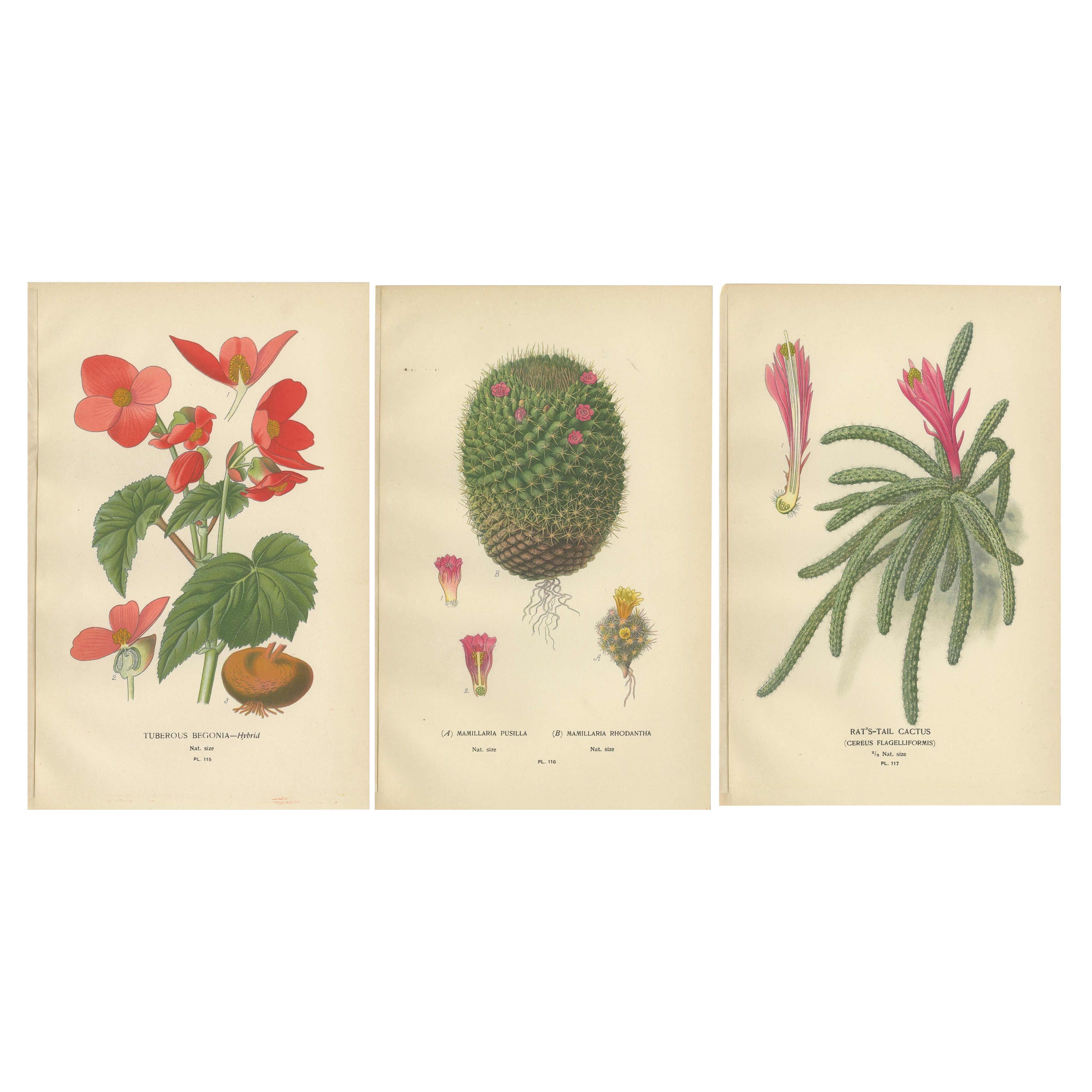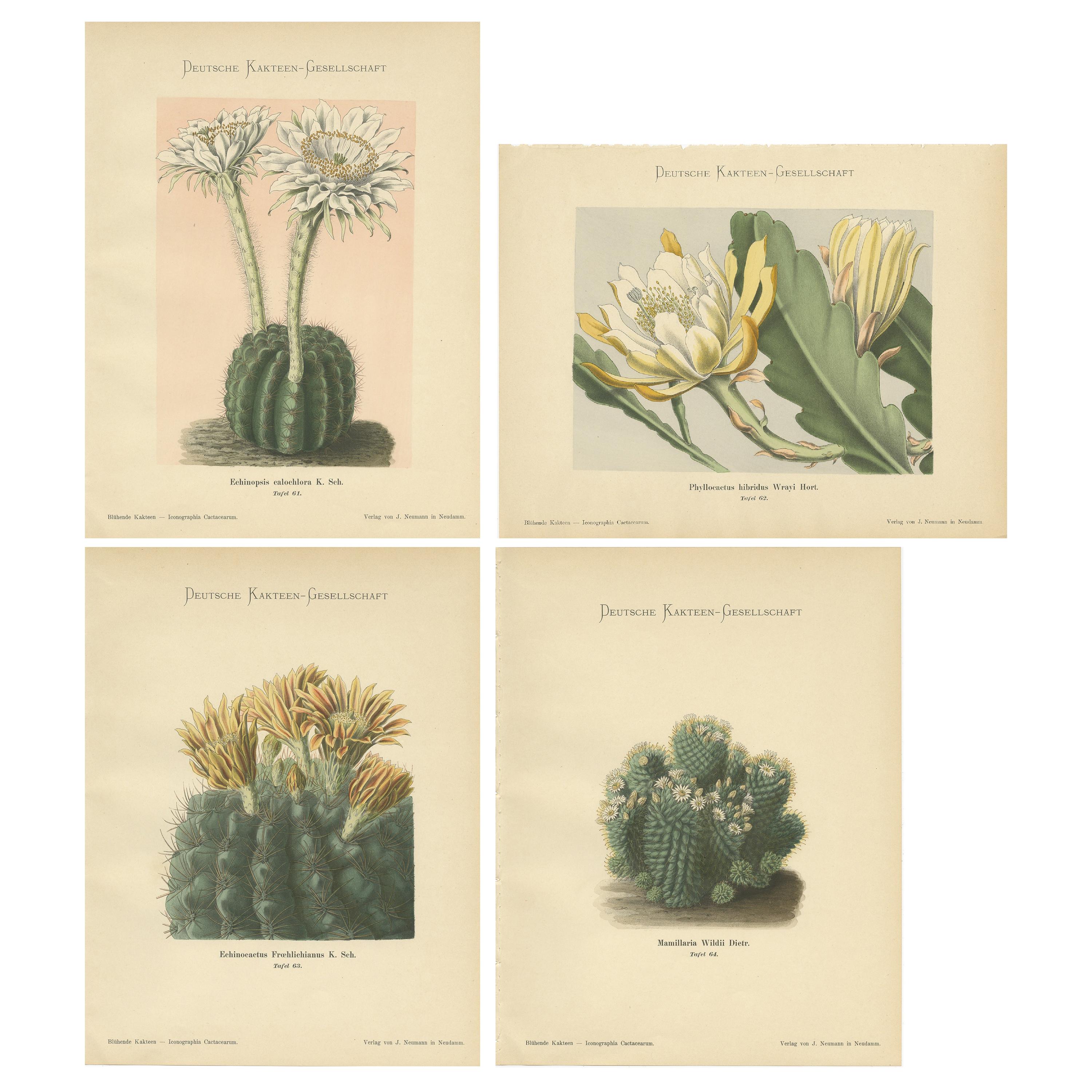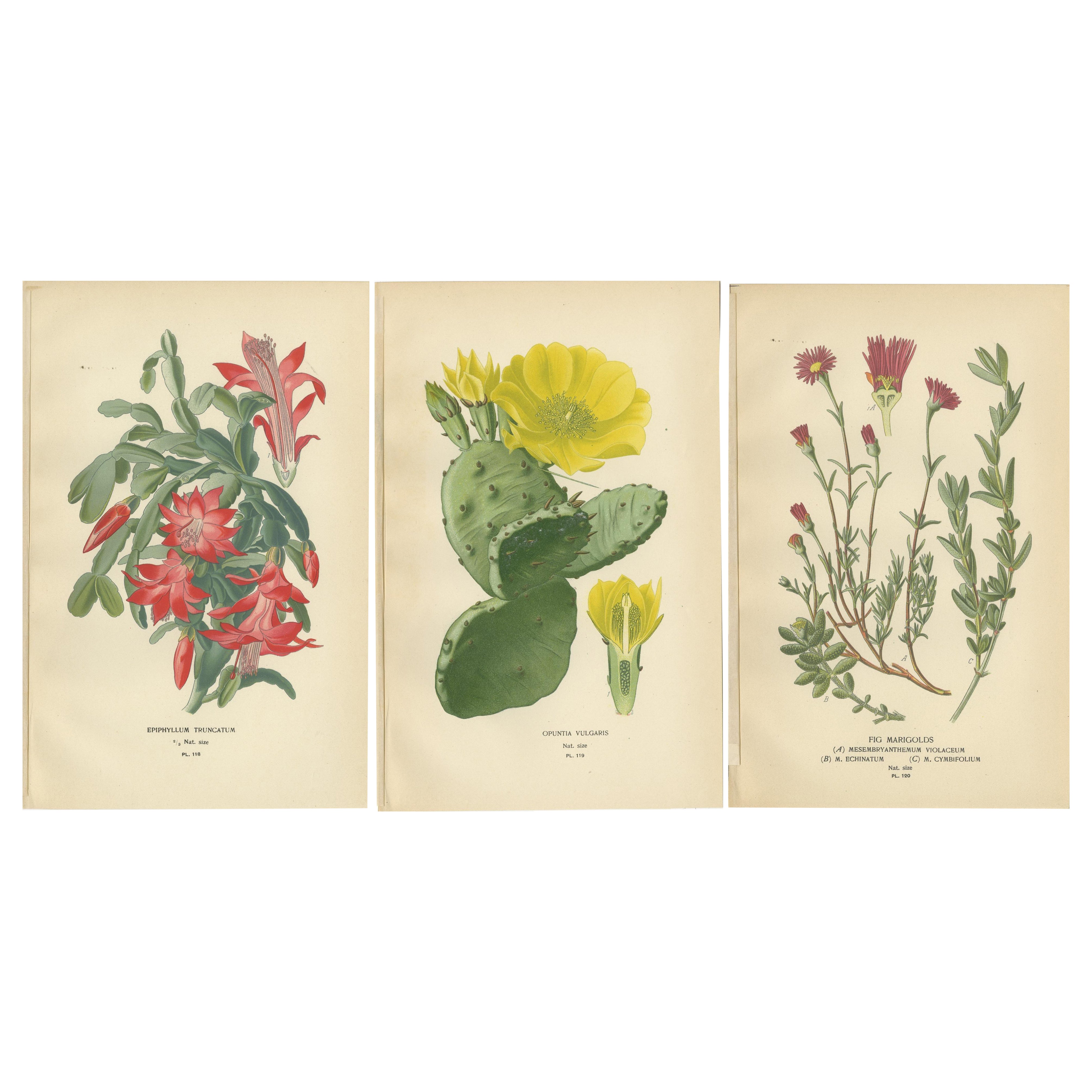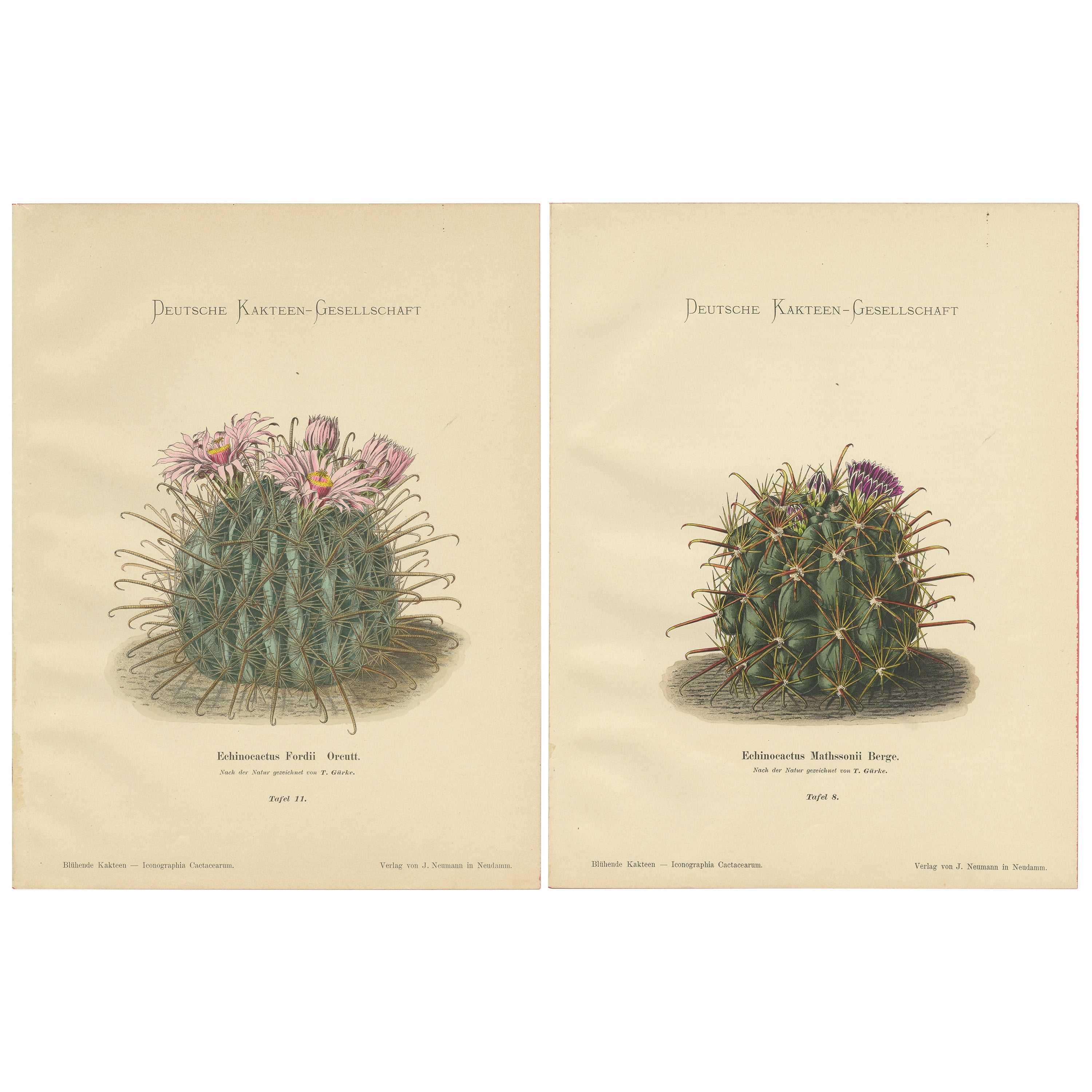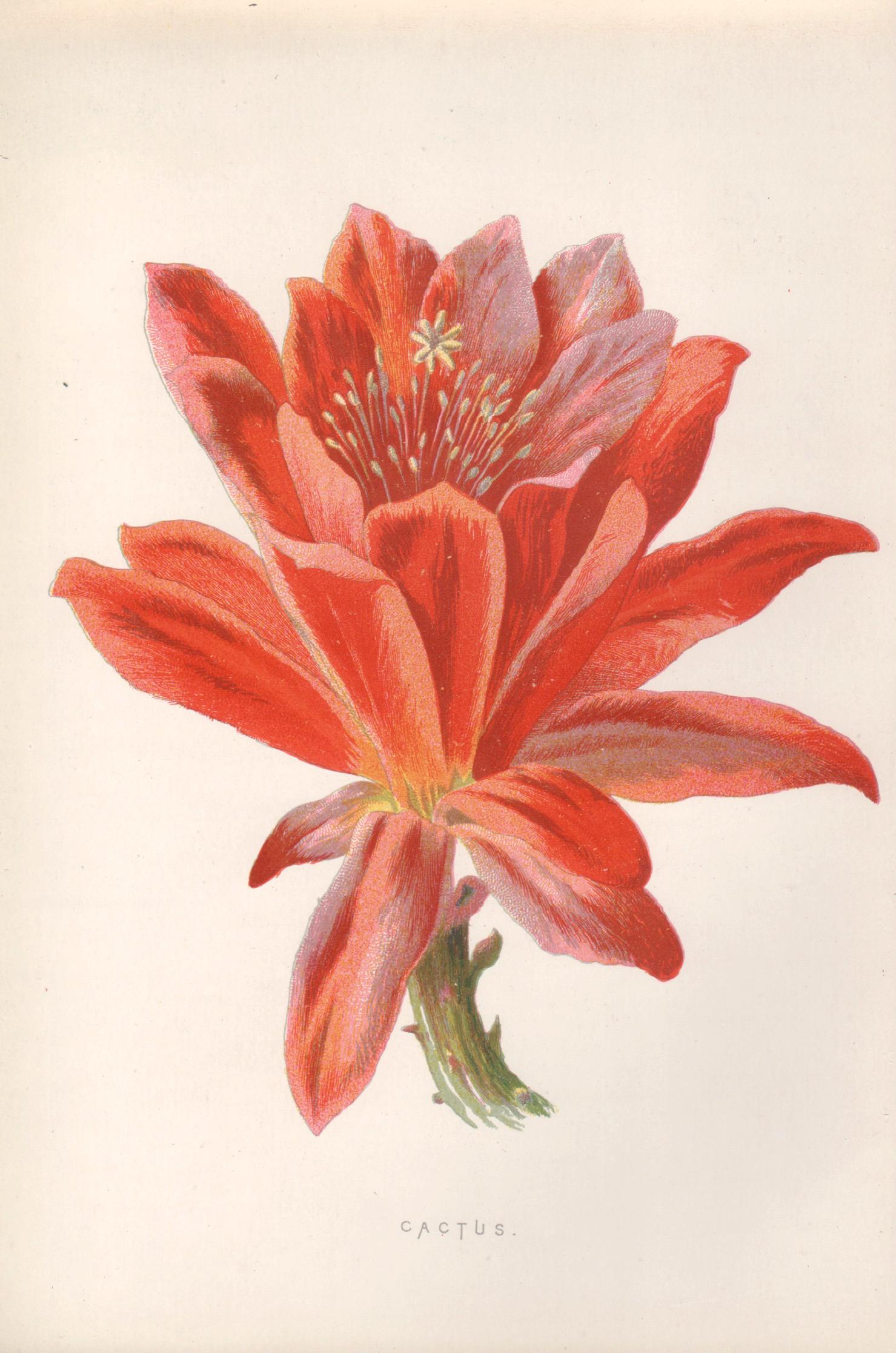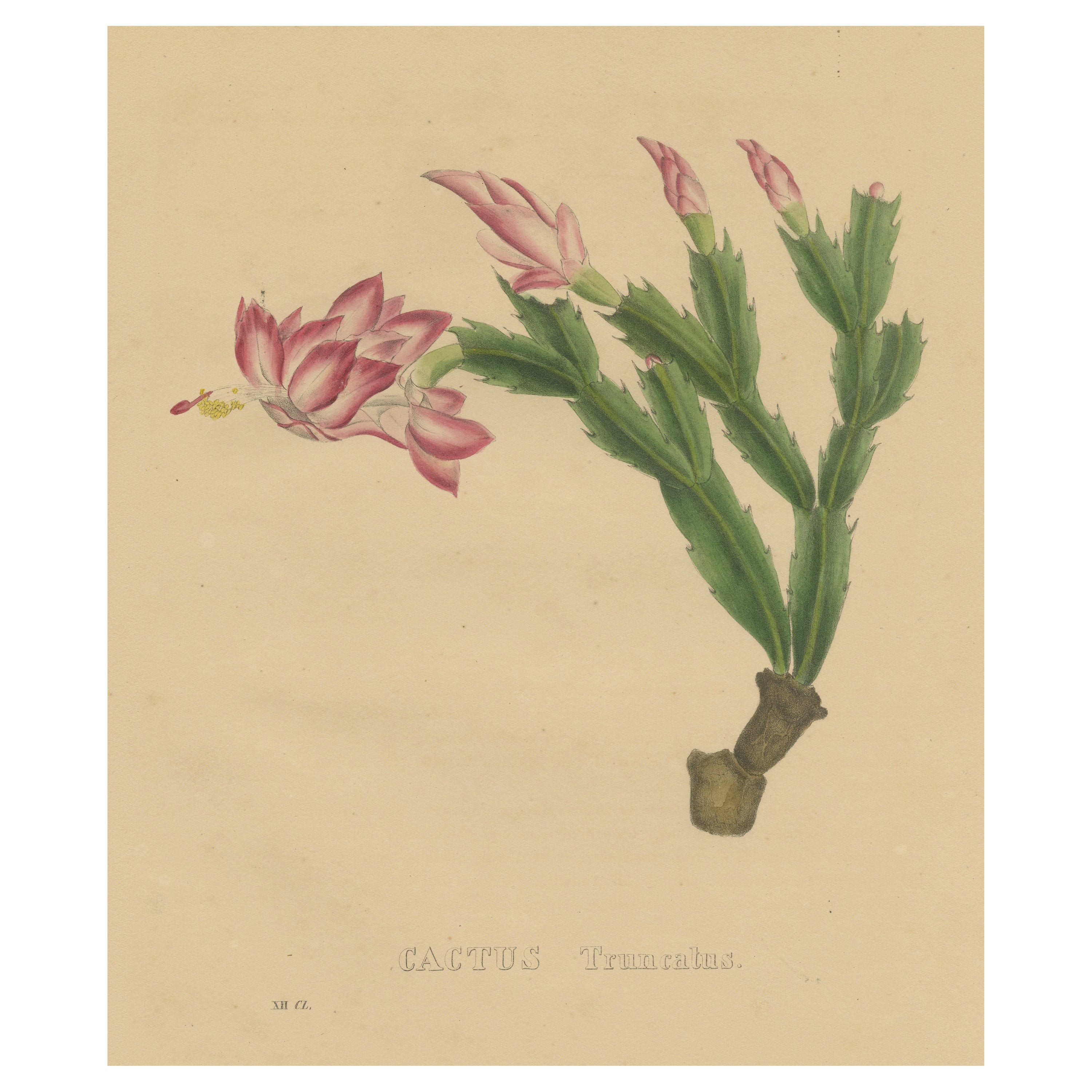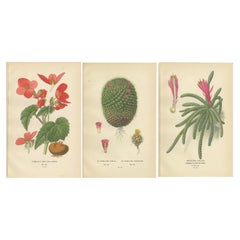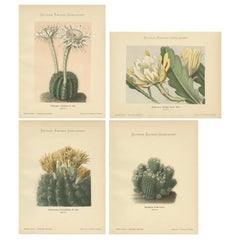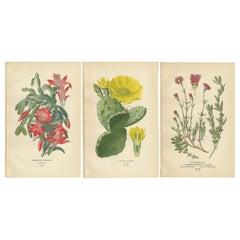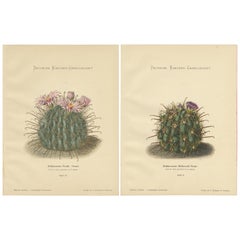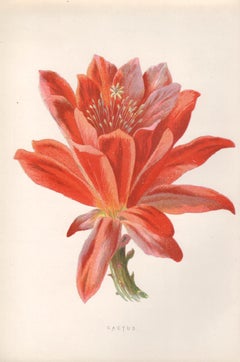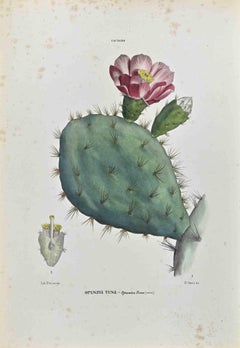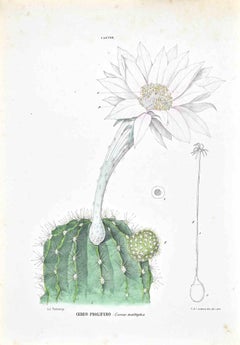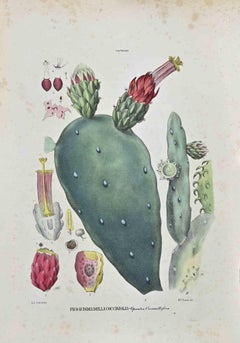Items Similar to Stunning 1897 Leaf-Stemmed Cactus Print – Phyllocactus Illustration
Want more images or videos?
Request additional images or videos from the seller
1 of 6
Stunning 1897 Leaf-Stemmed Cactus Print – Phyllocactus Illustration
$215.59
£159.77
€180
CA$294.33
A$327.43
CHF 171.64
MX$4,001.06
NOK 2,185.63
SEK 2,057.46
DKK 1,370.50
Shipping
Retrieving quote...The 1stDibs Promise:
Authenticity Guarantee,
Money-Back Guarantee,
24-Hour Cancellation
About the Item
Title: Stunning 1897 Leaf-Stemmed Cactus Print – Phyllocactus Illustration
Description:
This beautiful antique botanical print, published in 1897, features the vividly illustrated **Leaf-Stemmed Cactus** (*Phyllocactus phyllanthoides*), capturing the striking red blossoms and intricate details of the plant’s lush green stems. Part of the renowned *Favourite Flowers of Garden and Greenhouse* series by Edward Step and edited by William Watson, assistant curator of the Royal Gardens at Kew, this print offers both historical charm and timeless botanical artistry.
The illustration stands out for its remarkable accuracy and naturalistic colors, evoking a sense of wonder about exotic plants cultivated in Victorian greenhouses. Artists of this period, carefully selected for their precision and talent, employed detailed hand-drawing and chromolithographic techniques to replicate nature’s finest works. The vibrant red petals and subtle green tones reflect the era’s fascination with unusual plants brought back from distant lands.
This original print, over 125 years old, represents a moment in time when botanical studies flourished in Europe, particularly in Britain and France, where gardens and conservatories symbolized status, curiosity, and scientific advancement. Perfect for collectors of antique botanical prints, garden enthusiasts, or lovers of vintage decor, it provides a striking focal point when framed. Whether for a study, living space, or gallery wall, this piece offers enduring beauty and historical value.
The condition of this original 1897 antique botanical print is excellent considering its age of over 125 years. The colors remain vibrant, particularly the vivid reds of the blossoms and the lush greens of the cactus stems, which are still striking and clear. The paper itself has aged gracefully with only minimal signs of wear, such as slight yellowing around the edges, typical for a print of this period. There are no significant tears, stains, or creases that would detract from its visual appeal or historical value.
The lithographic details, including the intricate shading and texturing of the plant, are crisp and showcase the fine craftsmanship of 19th-century botanical illustration. This ensures the piece retains its charm and scientific accuracy, making it a stunning display item. Whether framed for home or professional settings, it remains a remarkable testament to the Victorian era’s passion for botanical art and plant exploration. Collectors and enthusiasts alike will appreciate the print's well-preserved state, ready to be admired for years to come.
- Dimensions:Height: 9.45 in (24 cm)Width: 6.11 in (15.5 cm)Depth: 0.01 in (0.2 mm)
- Materials and Techniques:
- Period:
- Date of Manufacture:1897
- Condition:This 1897 botanical print is well-preserved with vibrant colors, minimal edge yellowing, and crisp details, making it a stunning piece for display or collection.
- Seller Location:Langweer, NL
- Reference Number:Seller: BG-13692-3-11stDibs: LU3054342744232
About the Seller
5.0
Recognized Seller
These prestigious sellers are industry leaders and represent the highest echelon for item quality and design.
Platinum Seller
Premium sellers with a 4.7+ rating and 24-hour response times
Established in 2009
1stDibs seller since 2017
2,494 sales on 1stDibs
Typical response time: 1 hour
- ShippingRetrieving quote...Shipping from: Langweer, Netherlands
- Return Policy
Authenticity Guarantee
In the unlikely event there’s an issue with an item’s authenticity, contact us within 1 year for a full refund. DetailsMoney-Back Guarantee
If your item is not as described, is damaged in transit, or does not arrive, contact us within 7 days for a full refund. Details24-Hour Cancellation
You have a 24-hour grace period in which to reconsider your purchase, with no questions asked.Vetted Professional Sellers
Our world-class sellers must adhere to strict standards for service and quality, maintaining the integrity of our listings.Price-Match Guarantee
If you find that a seller listed the same item for a lower price elsewhere, we’ll match it.Trusted Global Delivery
Our best-in-class carrier network provides specialized shipping options worldwide, including custom delivery.More From This Seller
View AllAntique Prints: Tuberous Begonia, Mammillaria Cactus & Rat's-Tail Cactus, 1897
Located in Langweer, NL
Trio of Antique Botanical Prints: Tuberous Begonia, Mammillaria Cactus & Rat's-Tail Cactus
This extraordinary set of antique botanical prints showcases three fascinating plants: "...
Category
Antique 1890s Prints
Materials
Paper
Set of 4 Antique Cactus Prints, Echinopsis Calochlora, Schumann, circa 1900
Located in Langweer, NL
Set of four antique cactus prints depicting the Echinopsis Calochlora, Phyllocactus Hibridus Wrayi Hort, Echinocactus Froehlichianus and the Mamillaria Wi...
Category
Early 20th Century Prints
Materials
Paper
$239 Sale Price / set
20% Off
Antique Botanical Prints: Christmas Cactus, Prickly Pear Cactus & Fig Marigolds
Located in Langweer, NL
Trio of Antique Botanical Prints: Epiphyllum Truncatum, Opuntia Vulgaris & Fig Marigolds
This vibrant trio of antique botanical prints showcases three striking plants: "Epiphyllum...
Category
Antique 1890s Prints
Materials
Paper
Set of 2 Decorative Antique Cactus Prints, circa 1910
Located in Langweer, NL
The antique cactus prints, titled 'Echinocactus Fordii Orcutt' and 'Echinocactus Mathssonii Berge,' are part of the work 'Blühende Kakteen' (Flowering C...
Category
Early 20th Century Prints
Materials
Paper
$469 Sale Price / set
20% Off
Botanical Beauty: Schlumbergera - The Christmas Cactus, circa 1832
Located in Langweer, NL
The antique botanical print titled 'Cactus Truncatus' is a beautiful depiction of the Schlumbergera, commonly known as the Christmas cactus. Here's some information about this print:
1. **Title:** 'Cactus Truncatus'
2. **Botanical Significance:** The print showcases the Schlumbergera or Christmas cactus, a popular ornamental plant known for its vibrant and colorful flowers. This cactus is often cultivated for its attractive blooms, which typically appear during the holiday season, hence the common name "Christmas cactus."
3. **Origin:** The print originates from 'Sertum Botanicum. Collection Choisie de Plantes Les Plus Remarquables par Leur Elegance, Leur Eclat & Leur Utilite,' which can be translated as 'Botanical Wreath...
Category
Antique Mid-19th Century Prints
Materials
Paper
$182 Sale Price
20% Off
Free Shipping
Botanical Vintage Prints of Scarlet Sophronitis and Tropical Bloom, c.1845
Located in Langweer, NL
The prints are from Louis Van Houtte's and Charles Lemaire's "Flore des Serres et des Jardins de l'Europe," a detailed collection of botanical lithographs showcasing plants grown in ...
Category
Antique 1840s Prints
Materials
Paper
$229 Sale Price / set
20% Off
You May Also Like
Cactus, English antique red flower botanical chromolithograph, 1895
By Frederick William Hulme
Located in Melbourne, Victoria
'Cactus'
Process print from Frederick William Hulme’s ‘Familiar Wild Flowers’, circa 1890.
Hulme was known as a teacher and an amateur botanist. He was the Professor of Freehand an...
Category
Late 19th Century Naturalistic Still-life Prints
Materials
Lithograph
The Cactaceae - Lithograph by Vincenzo Tenore - 1870s
Located in Roma, IT
Lithograph hand watercolored.
Plate from "Atlante di Botanica popolare ossia Illustrazione di Piante Notevoli di ogni famiglia" (Atlas of popular botany or illustration of notable p...
Category
1870s Modern Figurative Prints
Materials
Lithograph
The Cacti - Lithograph by Vincenzo Tenore - 1870s
Located in Roma, IT
Lithograph hand watercolored.
Plate from "Atlante di Botanica popolare ossia Illustrazione di Piante Notevoli di ogni famiglia" (Atlas of popular botany or illustration of notable ...
Category
19th Century Modern Figurative Prints
Materials
Lithograph
The Cactaceae - Lithograph by Vincenzo Tenore - 1870s
Located in Roma, IT
Lithograph hand watercolored.
Plate from "Atlante di Botanica popolare ossia Illustrazione di Piante Notevoli di ogni famiglia" (Atlas of popular botany or illustration of notable p...
Category
1870s Modern Figurative Prints
Materials
Lithograph
Flowering Cactus: A Framed 18th C. Hand-colored Engraving by Redoute
By Pierre-Joseph Redouté
Located in Alamo, CA
This framed hand-colored stipple engraving entitled "Cactus Peruvianus Cierge du Pérou" by Pierre-Joseph Redouté, Plate 58 from his illustrated publication 'Plantarum Historia Succulentarum ou Histoire des Plantes Grasses', published in Paris in 1799. It depicts a branching limb of a cactus with a beautiful flower. There is a separate detail of the anatomy of a seed with early growth. Redoute was a pioneer of the stipple engraving technique, which he used to create this image. It involves utilizing a series of small dots worked into a copper plate rather than the more common lines. These dots can be made smaller or thicker depending on the degree of opacity the artist intends for various areas of the print. When inked and applied to paper, this allows for a greater portion of the paper to be seen, which accentuates the appearance of luminosity of the subject the artist is creating. Different color inks are used in the printing process, a time consuming technique known as "a la poupee". The engraving is then finished with watercolor to further enhance the beauty and realism of the print subject.
This engraving of a flowering cactus is presented in silver-colored ribbed wood frame and a double mat; cream-colored outer mat and heather green inner mat. The frame measures 21.25" high by 17.25" wide by 1.13" deep. The sheet measures 19.88" high by 14" wide. There are wide margins with a few short tears and chips along the the left, right and upper edges, which are all covered by the mat. There are small spots predominantly in the margins, with a few present in the image area. The print is otherwise in very good condition. There is another Redoute flowering cactus listed on 1stdibs, LU117326853392, which is framed and matted identically to this one. The pair would make an attractive display grouping.
Pierre-Joseph Redouté (1759-1840), was a painter and botanist originally from Belgium, who pursued his extremely successful artistic career in France. He is well known for his watercolor paintings of roses, lilies and other flowers and their subsequent folio-sized, color stipple engravings. Some believe him to be the greatest botanical illustrator of all time. Redouté was a favorite of the French royal court at the time and of the post French...
Category
Late 18th Century Naturalistic Still-life Prints
Materials
Engraving
Flowering Prickly Pear Cactus: Framed 18th C. Hand-colored Engraving by Redoute
By Pierre-Joseph Redouté
Located in Alamo, CA
This is a hand-colored stipple engraving entitled "Cactus Opuntia Polyanthos, Cierge Raquette Multiflore" (Prickly Pear Cactus) by Pierre-Joseph Redouté, Plate 59 from his illustrated publication 'Plantarum Historia Succulentarum ou Histoire des Plantes Grasses', published in Paris in 1799. Redoute was a pioneer of the stipple engraving technique, which he used to create this image. It involves utilizing a series of small dots worked into a copper plate rather than the more common lines. These dots can be made smaller or thicker depending on the degree of opacity the artist intends for various areas of the print. When inked and applied to paper, this allows for a greater portion of the paper to be seen, which accentuates the appearance of luminosity of the subject the artist is creating. Different color inks are used in the printing process, a time consuming technique known as "a la poupee". The engraving is then finished with watercolor to further enhance the beauty and realism of the print subject.
This engraving of a flowering cactus is presented in a double mat; white outer mat and heather green inner mat.The mat measures 20" x 16" and the sheet measures 19.5" x 13.38". There are wide margins with a few short tears and chips along the the right and upper edges, which are all covered by the mat. There are small spots predominantly in the margins, but a few are present in the image area, but the print is otherwise in very good condition. There is another Redoute flowering cactus listed on 1stdibs, LU117326854582. The pair would make an attractive display grouping.
Pierre-Joseph Redouté (1759-1840), was a painter and botanist originally from Belgium, who pursued his extremely successful artistic career in France. He is well known for his watercolor paintings of roses, lilies and other flowers and their subsequent folio-sized, color stipple engravings. Some believe him to be the greatest botanical illustrator of all time. Redouté was a favorite of the French royal court at the time and of the post French...
Category
Late 18th Century Naturalistic Still-life Prints
Materials
Engraving
More Ways To Browse
Antique House Jack
Antique Jacobean Chest Of Drawers
Antique Japanese Altar
Antique Japanese Umbrella
Antique Kimono Fabric
Antique Louis Xv Style Bombe Commode
Antique Mechanical Toys
Antique Pen Display Case
Antique Pewter Dish
Antique Pink Glass Bottles
Antique Pottery Hb
Antique Prayer Box
Antique Pull Toys
Antique Punched Tin
Antique Rose Teapot
Antique Soapstone Carvings
Antique Spice Jar
Antique Spice Jars
